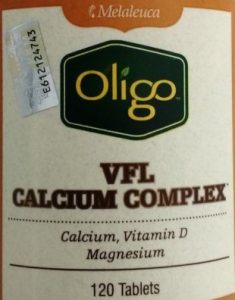Although humans are capable of using fat as fuel, most people have an abundance of glucose available for energy, which keeps their fat-burning ability switched off. When changing to an LCHF lifestyle, the body needs to be reminded it can happily exist on fat.
Fat adaption
Retraining your body to use its in-built capabilities to burn fat is often called fat adaption.
Adapting to fat as the main fuel for energy can be a struggle for some people, because the body tries, as it were, to resist the change. It’s much easier to carry on burning glucose.
The process of fat adaption can make you feel at ‘half-mast’ for a couple of days or even longer, with ‘flu-like symptoms – the so-called ‘keto ‘flu’.
When I started LCHF, I didn’t have the keto ‘flu as such, but occasionally I noticed these change-over signs:
- Sometimes felt as if a headache were going to start.
- Occasionally a little light-headed.
- Frequent visits to the bathroom for number one.
- Early-morning cramp in my calves.
Water loss – drink more water
Before the body starts using fat for energy, it uses the existing stores of glycogen first, which increases excretion of water.
The kidneys also excrete more of the electrolytes sodium, potassium and magnesium along with the extra water.
It’s the loss of the water and the electrolyte minerals that causes some of the keto ‘flu symptoms, so make sure you drink plenty of water every day – even more than you’re used to drinking.
Electrolytes – eat more salt
The loss of electrolytes can cause a fall in blood pressure, which will give you a feeling of light-headedness, or even make you feel a bit dizzy. If you get these feelings, they’re easy to stop by eating more salt.
We already used colourful Himalayan salt, which provides sodium and many other minerals, and I bought some low salt to add to it. Low salt has potassium chloride to replace some of the sodium chloride, as well as magnesium salts, and potassium iodate to provide iodine.
Adding the low salt/Himalayan salt mixture to my food increased my sodium, potassium, and magnesium levels to help restore my electrolyte balance. I’m eating about 5 gm (1 teaspoon) of the salt mixture a day.
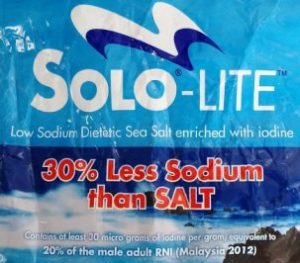
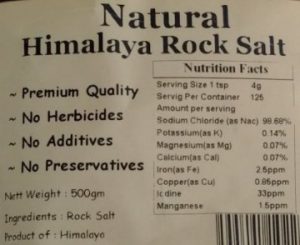
Blood pressure – check it, if using more salt
Some people are particularly sensitive to salt, and may experience an increase in blood pressure if they increase their salt intake.
Also, people who are overweight often have high blood pressure as well, and they may experience a further increase in blood pressure with extra salt.
Needless to say, if you’re taking medicine to reduce high blood pressure, or to treat swollen ankles and feet, please don’t alter your salt consumption without talking with your doctor first.
And remember, if you’ve got hypertension or swollen ankles and feet, don’t even start the LCHF lifestyle without letting your doctor know what you plan to do so he can adjust your medicine as your blood pressure or swelling reduces.
I check my blood pressure every day, and know the extra salt I’m eating is not affecting it at all.
Theoretically, the pressure varies a little from day to day, and at various times during the same day, but there’s no need to be too fixated with it. I just measure once a day. Today it’s 115/66 with a heart rate of 59 beats per minute, so my teaspoon of salt mix a day is okay for me.
This is the blood-pressure monitor I use, which is made in Switzerland by microlife. Bought it in Watsons pharmacy in Mid Valley MegaMall for a very reasonable RM159.15…
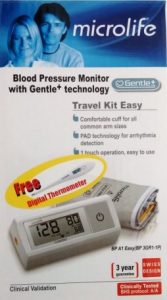
The website blood pressure UK has some really good info and is well worth a visit.
I downloaded a free chart from their website, which you can get here if you want:
Blood pressure chart for adults.pdf (124 kB)
Bouillon cube
Dr Stephen Phinney, one of the original pioneers of the LCHF lifestyle, sips a drink made with a bouillon cube to give him extra salt in a tasty way.
I had a look at the ingredients of various bouillon cubes in our local supermarket and was surprised to see what they had in them.
Apart from an assortment of chemicals, they all had sugar in them – including the organic one – listed as maltodextrin, dried glucose syrup, or sugar.
If you fancy using bouillon, hopefully you can find cubes that meet the LCHF caveat of chemical-free, real food.
Bone broth
Many people enjoy bone broth as a real-food way of getting a good supply of minerals, as well as other nutrients.
This video by mostlyKeto shows you how to make it, and the steps are written out below the video, which is very useful, too.
Leg cramps – need more potassium and magnesium
The potassium and magnesium in our salt mix also helped to stop the cramp in my calf muscles. To be doubly sure, I take two of Kordel’s chelated magnesium capsules at night before going to bed.
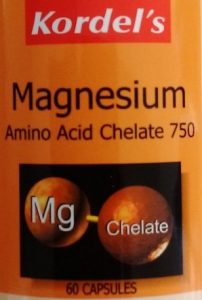
Lethargy and tiredness – need more vitamin B5
Vitamin B5 is involved in the chemical processes our body uses in the changeover to burn fat, so it can get depleted, which results in tiredness and a feeling of lethargy.
Some people advise taking a B5 supplement to combat the lethargy, but I’m not a fan of isolated vitamins. They never occur in Nature in isolation.
Vitamin B is actually a large family of vitamins, the members of which work hand-in-hand inside us, so I prefer to take a complex containing as many of the B vitamins as possible, with food so everything mixes together nicely.
The Multi B by Blackmores is the one with the most vitamin B members I have found:
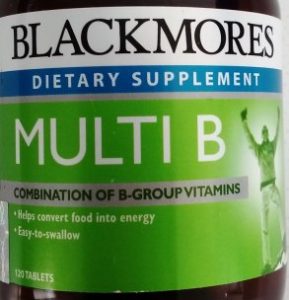
Disturbed sleep – more calcium/magnesium
Some people find their sleep is not so restful, or they have difficulty dozing off.
A calcium/magnesium supplement is good for getting a restful night, and we take 2 tablets about half-an-hour or so before going to bed, of Melaleuca’s VFL Calcium Complex with magnesium and vitamin D:
Video – dealing with keto flu
Dr Eric Berg made a good video about dealing with keto flu, which I’ve listed on Thrive Low Carb’s playlist. Here’s the link if you’d like to watch it.
Cravings
At first you may get cravings for the sweet things you used to eat, but the feelings will subside as your body becomes adapted to the new low carbohydrate intake.
If you’re really climbing the walls, try sugar-free jelly. Read the labels, though. Most of the sugar-free products are packed with chemical sugar substitutes, synthetic flavourings, and synthetic colourings, which won’t do you any good at all.
Keep going – don’t give up
The cravings and the so-called keto ‘flu don’t affect everyone. If you do have some symptoms, take the steps I’ve described above, know it’s only a transient phase, and push through it.
After you’ve re-educated your body to run on fat, you’ll be amazed how wonderfully alive you feel.
Let me know if you have any questions – use the comment box below – and I’ll answer you as soon as possible.

